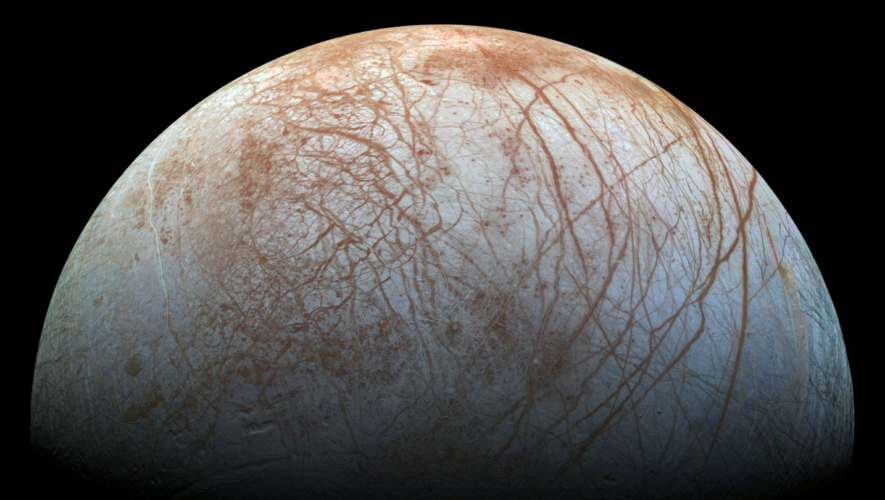The Europa Clipper spacecraft achieved a significant milestone on Monday and is set for launch next month to investigate indications of habitability on one of Jupiter’s moons, NASA reported. The launch window for its mission commences on October 10.
The mission successfully passed Key Decision Point E, a crucial planning phase authorizing the mission’s progression towards launch. This approval was a relief to the Europa Clipper team following the discovery of a potential issue with transistors on the spacecraft in May.
Transistors play a key role in managing the flow of electricity within the vehicle, and engineers raised concerns about their durability in Jupiter’s harsh radiation environment.
Extensive testing of the transistors was conducted over four months at NASA’s Jet Propulsion Laboratory in Pasadena, California, the Johns Hopkins University Applied Physics Laboratory in Laurel, Maryland, and NASA’s Goddard Space Flight Center in Greenbelt, Maryland.
The team successfully completed the essential testing in a timely manner, averting a 13-month delay in the launch to explore Europa, a world covered in ice that may harbor the potential for life in its salty, subsurface ocean. The Europa Clipper carries ten scientific instruments capable of assessing the possibility of life beyond Earth in our solar system.
The Europa Clipper has now received approval for launch without any alterations to its mission plan, objectives, or trajectory.
Nicola Fox, associate administrator for NASA’s Science Mission Directorate, expressed during a news conference on Monday, “It’s the final major review before we really get into the launch phase, and we are delighted to confirm that they have unequivocally passed that review today.”
In May, the spacecraft’s transistor manufacturer alerted the mission team to potential radiation vulnerability of the components distributed across the spacecraft.
Jupiter, the largest planet in our solar system, features a magnetic field 20,000 times more powerful than Earth’s, trapping charged particles and accelerating them to high velocities. These fast-moving particles emit intense radiation that impacts Europa and Jupiter’s other neighboring moons.
Any spacecraft headed towards Jupiter requires radiation-hardened electronics.
Jordan Evans, Europa Clipper project manager at JPL, elaborated, “Europa is positioned near the outer edge of the most hazardous part of Jupiter’s radiation belt. Flying close to Europa exposes us to this high flux of destructive particles, and thus the mission engineers and Europa Clipper must ensure that the spacecraft components can endure the radiation environment throughout our four-year mission.”
Data from prior NASA missions to Jupiter, such as the Juno probe currently studying the planet and its moons, were utilized to validate the transistor testing process, Evans noted.
The tests, conducted around the clock since May, simulated conditions of spaceflight to assess how the spacecraft and its components would fare during 49 flybys of Europa and approximately 80 orbits around Jupiter over a four-year span.
The team confirmed that the transistors have the ability to self-repair between flybys.
“We concluded, after all of this testing, that during our orbits around Jupiter, while Europa Clipper does dip into the radiation environment, once it comes out, it comes out long enough to give those transistors the opportunity to heal and partially recover between flybys,” Evans stated.
A radiation monitor aboard the spacecraft will enable the team to monitor the condition of the transistors.
“I have high confidence that we can successfully accomplish the original mission of exploring Europa as planned,” Evans affirmed.
When Curt Niebur, Europa Clipper program scientist, joined NASA in 2003, he faced the challenge of advancing a Europa mission. Each year, the efforts to design and construct Europa Clipper have grown more arduous, he noted.
“There was no more challenging year than this past year and especially this past summer,” Niebur remarked. “But throughout it all, one thing we never doubted was that this endeavor would be worthwhile. It provides us with an opportunity to explore not just a world that might have been habitable billions of years ago, but a world that could potentially be habitable today — a chance to pioneer the first exploration of this recently discovered type of world known as an ocean world completely immersed in a liquid water ocean, unlike anything we have seen before. That’s what awaits us at Europa.”
The primary objectives of the mission revolve around determining whether Europa possesses the essential components to sustain life as we understand it, including water, energy, and chemistry. Without a scientific instrument capable of definitively detecting life, the Clipper cannot conclusively identify evidence of it, Niebur emphasized.
“If Europa Clipper confirms that these components are present, we will undoubtedly advocate for a subsequent mission to search for life,” Niebur declared.
Europa Clipper will play a critical role in guiding NASA’s decisions on future missions, identifying areas of the ice crust that may be thin and locations where water from the subsurface ocean could erupt, as per Laurie Leshin, director for JPL.
“If we arrive and conduct this investigation, and the good news is that all the essential elements are there and it is habitable, it signifies that two locations within our solar system currently possess all the necessary components for life to thrive,” Niebur highlighted.
“Consider the implications when extending this outcome to the countless other solar systems in this galaxy,” he added. “Setting aside the question of ‘Is there life’ on Europa, simply the question of habitability in itself unveils a significant new avenue for exploring life in the galaxy.”
Source: CNN




